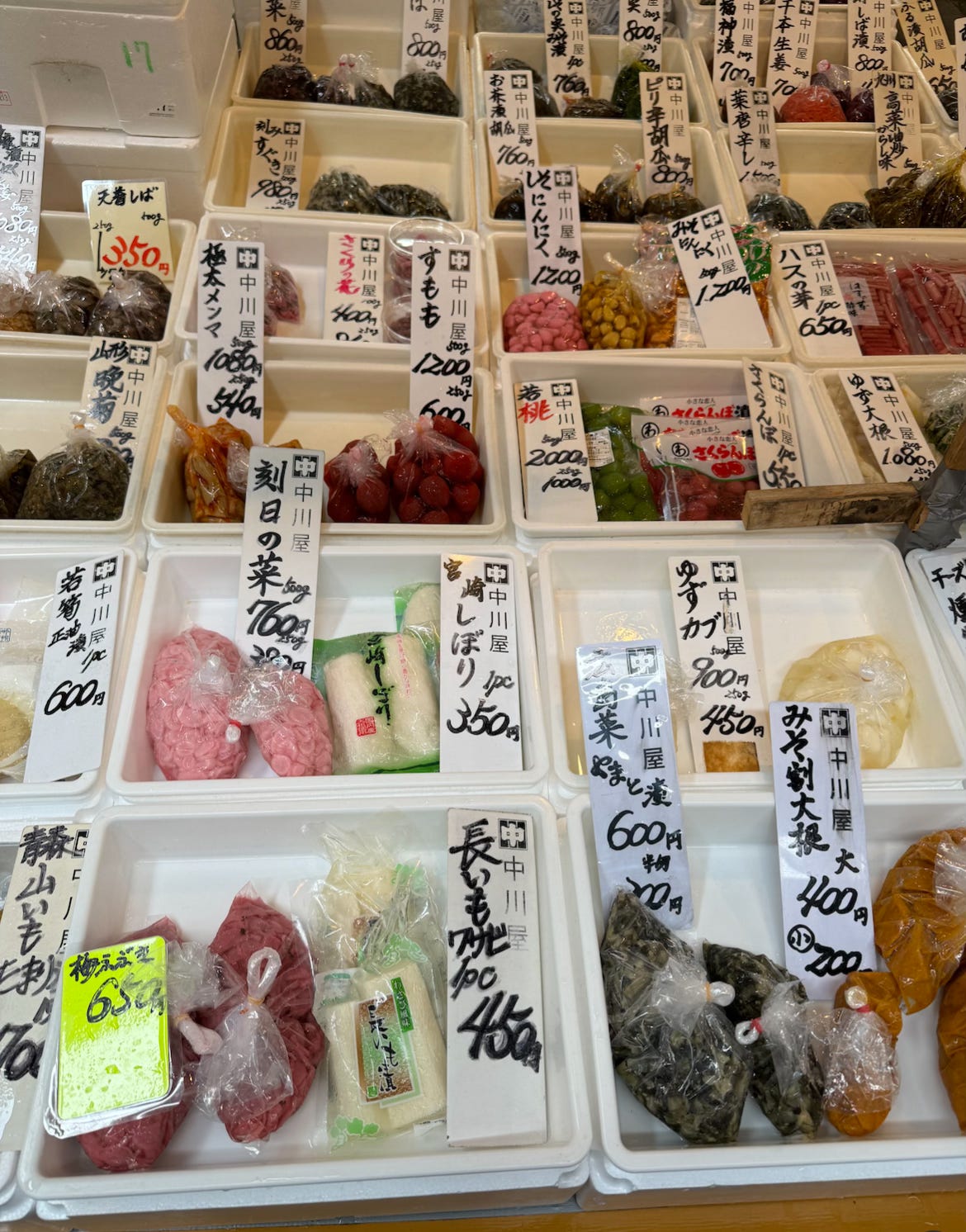We all have a favorite cuisine, and mine is without a doubt Japanese: I love the brightness, acidity and simplicity of the dishes.
Tsukemono, Japanese pickles, are a typical side dish. They’re my dream crunchy palate cleanser and I can’t get enough of them. While I’ve always appreciated these bursts of tang, I did not know until recently that there are so many different ways to pickle in Japanese cuisine.
I had the privilege of traveling to Tokyo earlier this year (you can find my city guide here) and brought back so many goodies to explore with in my kitchen, one of which was a bag of nukadoko. This rice bran is a distinct form of pickling which I had never even heard of before! This got me thinking… I’ve always leaned towards Japanese flavors in my home cooking but how many diverse ways of cooking was I actually missing out on? And what better way to dive deep into this cuisine than with pickling??
Long story short, my apartment flooded and I had to throw my new discovery of nukadoko (and nukazuke, the rice bran pickles) into the trash a mere 48h after opening it… A TRAGEDY. You’ll be happy to know that I’ve just started a new batch (from scratch!) and I’ll happily share the results once it’s ready.
Anyways, back to tsukemono in general. I’ve spent weeks this summer experimenting, on and off camera, testing out recipes and learning about various modes of Japanese pickling. I compiled this short list on my notes app, my all time favorite application, so I figured why not share it with you?!
Tsukemono Dictionary
Whilst this list is brief, I hope it gives you a basic understanding of the immense variety and distinct methods used to create flavor punch in Japan.
Some pickling methods:
Amazuzuke: sweet pickle, rice wine vinegar and sugar to pickle
Asazuke: light pickle, 2-3% of the veggie’s weight in salt to pickle
Karashizuke: karachi (hot mustard) pickle
Kasuzuke: sake pickle, uses the sake lees (sediment) to do so
Misozuke: miso pickle
Nukazuke: rice bran pickle
Satozuke: sugar pickle
Shibazuke: purple pickle popular in Kyoto, umezu (Japanese plum vinegar) to pickle
Shiozuke: salt or salt brine pickle
Shiokoji-zuke: rice koji (mold) pickle
Shoyuzuke: soy sauce pickle
Amazuzuke PINKles
Amazuzuke refers to a sugar and rice vinegar pickle. Displayed above, it is one of the basic pickling methods to make tsukemono. What makes it distinct is that it uses vinegar, similar to a Western pickling, rather than salt, miso, rice bran etc. Sushi ginger, gari, is an example of amazuzuke!
The name comes from the words ama which means sugar, zu, vinegar, amazu sweet vinegar and zuke, which means marinate or pickle.
I find that radish pickles not only extremely quickly but also deliciously when using this method. The best part, it becomes PINK! I combine my radish with cucumber purely for the aesthetic of a pink and green duo but you do you.
I also like to use persimmon, daikon, carrots, purple cabbage and ginger. Evidently, use whatever veg you’d like, add some chili, chuck in whatever is in your fridge it’s really up to you… You don’t even need to use the ginger or kombu, I just personally like the flavor they impart.
Prepare to liven up some dishes and crunch crunch crunch away!
PINKLES Recipe
While all you really need for this recipe is rice wine vinegar, sugar, salt and a veggie of choice, here is my go-to recipe.









